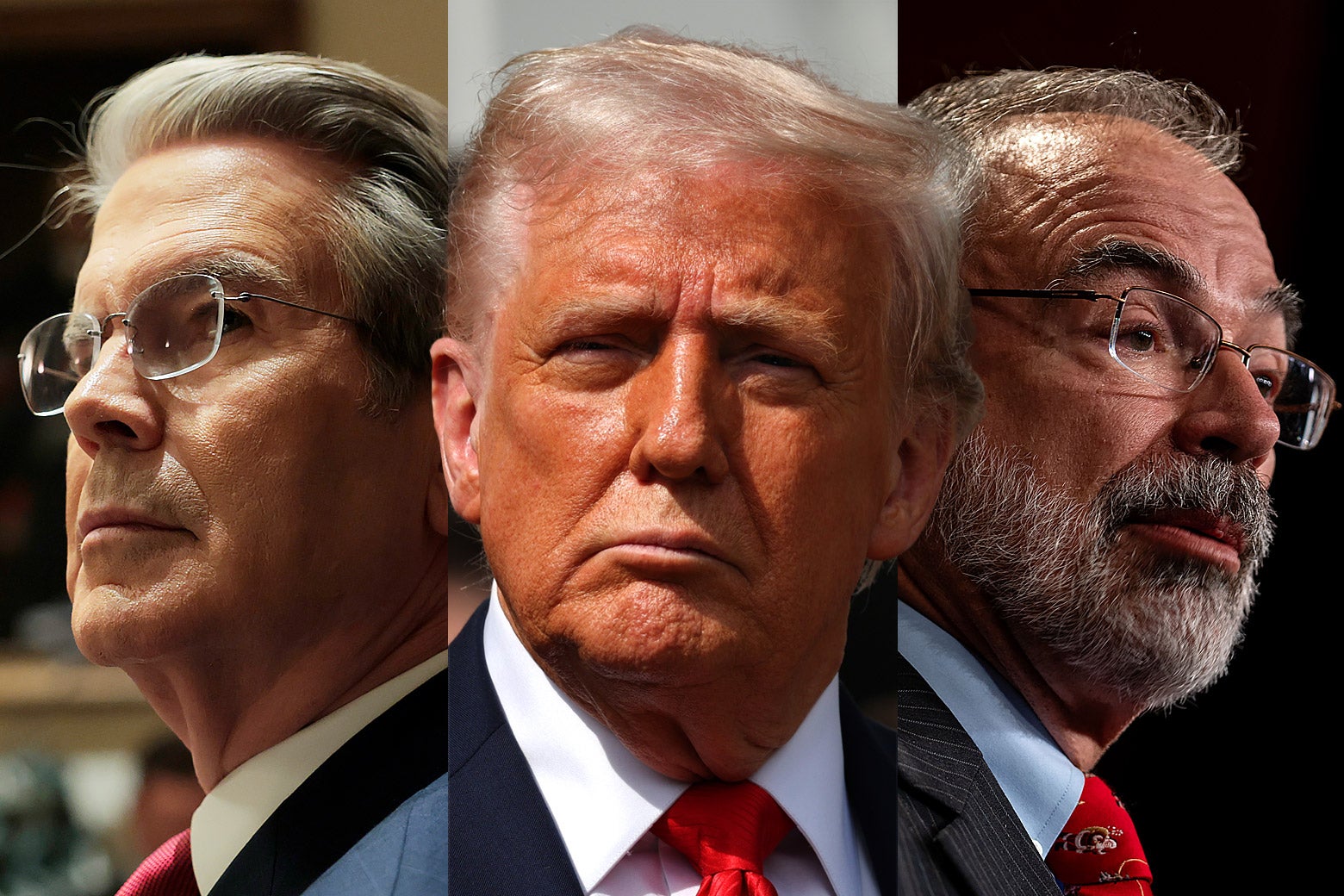Sign up for the Slatest to get the most insightful analysis, criticism, and advice out there, delivered to your inbox daily.
Muscle memory is leading congressional Republicans to a doomed electoral place. For the second Trump presidency in a row, the House and Senate GOP have teed up a legislative agenda that will cut taxes for the wealthy while raiding safety net programs like Medicaid and food stamps. They should already know how unpopular this will be: Republicans’ effort to cut Medicaid—under the branding of “Obamacare repeal”—never made it to the finish line in Donald Trump’s first term. But the mere attempt to do so contributed heavily to their loss of 40 House seats, and control of that chamber, in the 2018 midterms.
Republicans’ destination here is why many Democrats have been content to wait for the Trump administration to overreach—they’ve long assumed that Republicans don’t know any better but to follow this course. And it’s not just the proposed swap of Medicaid funds for tax cuts that Democrats have honed in on. Every organized message from House and Senate Democrats against the Trump administration has led back to their pursuit of tax cuts for the wealthy. Elon Musk’s reckless slashing of the federal government? Banking money for tax cuts for the rich. Universal and reciprocal tariffs? A tax increase on average Americans to offset tax cuts for the rich. What Democrats are trying to say is: The Trump-era Republican coalition may have represented itself as the new party of the working class, but as soon as they get power, they revert to the same old, same old.
Or will it really be the same old, same old? Surprisingly, as Republicans finally set pen to paper on their “one big, beautiful bill” comprising tax cuts, spending cuts, and increases to defense and immigration enforcement spending, they’re suddenly considering a fiscal policy curveball for the ages: raising income taxes on the rich.
Some in the White House, as Axios first reported in late March, were considering allowing the 37 percent rate for the top tax bracket—set in place in the 2017 Trump tax law—to expire, returning it to 39.6 percent. That would have two advantages. It would give them hundreds of billions of additional dollars to use for other tax priorities, like eliminating tax on tips, overtime, or Social Security benefits. More importantly, though, it would wound one of Democrats’ sharpest talking points. As a White House official told Axios, “If we renew tax cuts for the rich paid for by throwing people off Medicaid, we’re gonna get f–king slaughtered.”
The reporting was initially laughed off on the Hill. Quite literally, in the case of House Republican Whip Tom Emmer, who “tilted his head back and laughed very loudly” when asked about the idea in early April, according to Punchbowl News. House Majority Leader Steve Scalise, more sternly, said “no” three times over.
It’s understandable that they’d be shocked at the suggestion. The debate over a few points here or there in the top marginal tax rate has been a foundational partisan dispute of 21st-century American politics.
In the early 2000s, President George W. Bush lowered the top marginal rate to 35 percent with his signature tax cuts. Raising that rate back to where it was under the Clinton administration—39.6 percent—was a centerpiece of the next several Democrats presidential campaigns, until President Barack Obama finally achieved it as part of a tax deal following his reelection. The Trump tax cuts lowered it back to 37 percent in 2018. Democrats were unable to raise it back to 39.6 during the Biden administration because Arizona Sen. Kyrsten Sinema—now doing quite well for herself in the private sector—would not support it.
It has been assumed that Republicans would, at the very least, retain that 37 percent top rate as they put together their new tax package. That is just what happens: Republicans take power and cut the top rate, then Democrats come in and raise it back (or find themselves frustratingly impeded by an Arizona eccentric.) These positions are partisan articles of faith. It’s been practically as rigidly defined as the abortion debate.
But despite some GOP leaders’ initial laughter, the idea isn’t going away. Treasury Secretary Scott Bessent hasn’t ruled out such an increase. Trump has reportedly said he’d be OK with such an increase. Maryland Rep. Andy Harris, chairman of the conservative House Freedom Caucus, has said the same (though only speaking for himself, not the group.) And, as Bloomberg reported Tuesday, it’s become more than just chatter at this point, as White House and congressional Republicans are drafting options—including, potentially, a new rate of 40 percent on those making $1 million or more a year.
We are a long way from seeing such a draft policy make its way into federal law. There’s still limited, if any, appetite for it on the Hill. Republican donors, in particular, did not pay for this. There are complicated tie-ins to work out, such as how it would affect business owners’ pass-through income. The enforcer of Republicans’ no-tax-increases pledge, Grover Norquist, will start making a stink. If Trump doesn’t care one way or another, it probably won’t happen. If he really wants it, though, forget the gripes from Norquist or donors or any other element of the GOP old guard: He can make it happen.
If Republicans do raise taxes on the wealthy, the effect could be dramatic. They would be swiping a bedrock policy belief of the Democratic Party’s, and stifling one of Democrats’ central critiques of Republican governance. They would be acknowledging the sudden influx of lower-income voters into their coalition. No, they would not be relinquishing all thoughts they have of comforting the comfortable in this package—a repeal of the estate tax, for example, is still on the table. But it would be a high-profile statement.
And if they’re interested in another one: How about reconsidering those Medicaid cuts, too?

